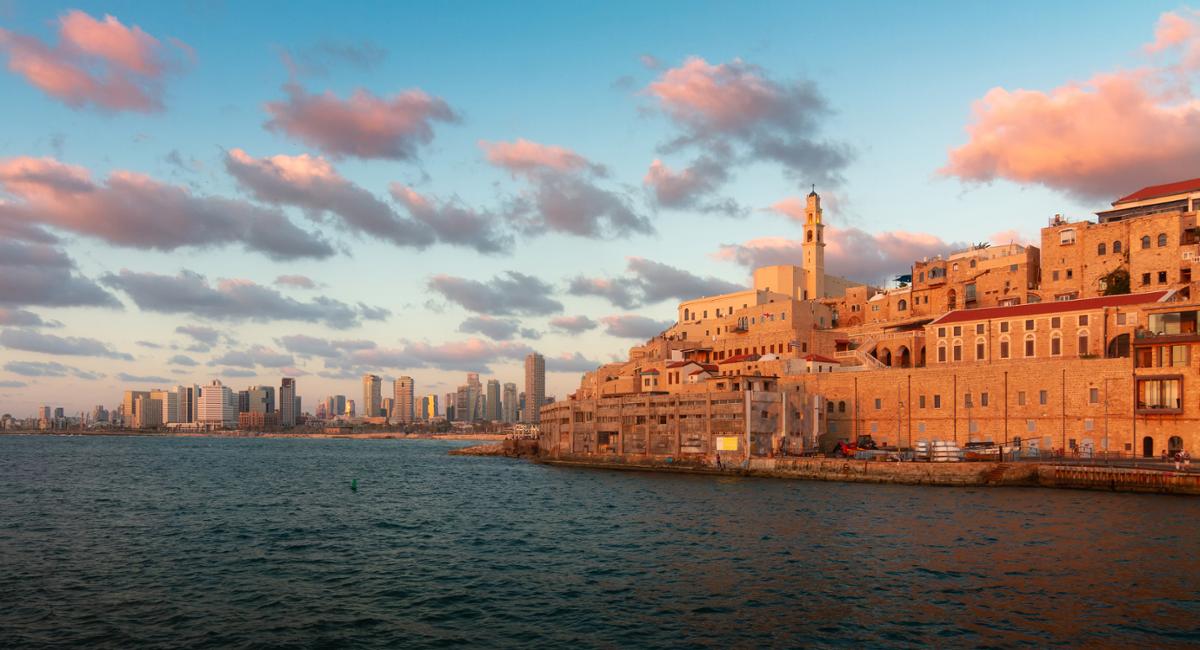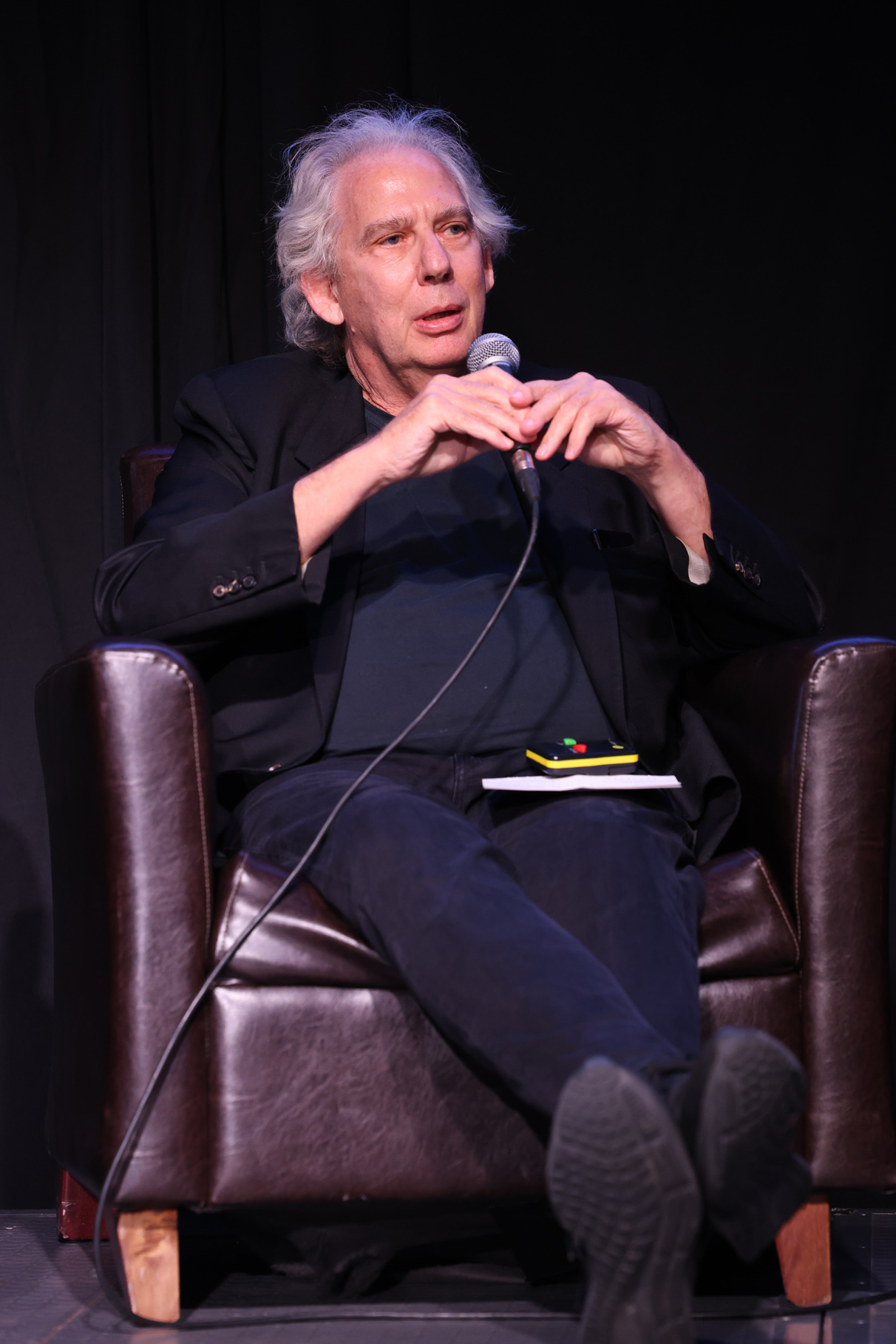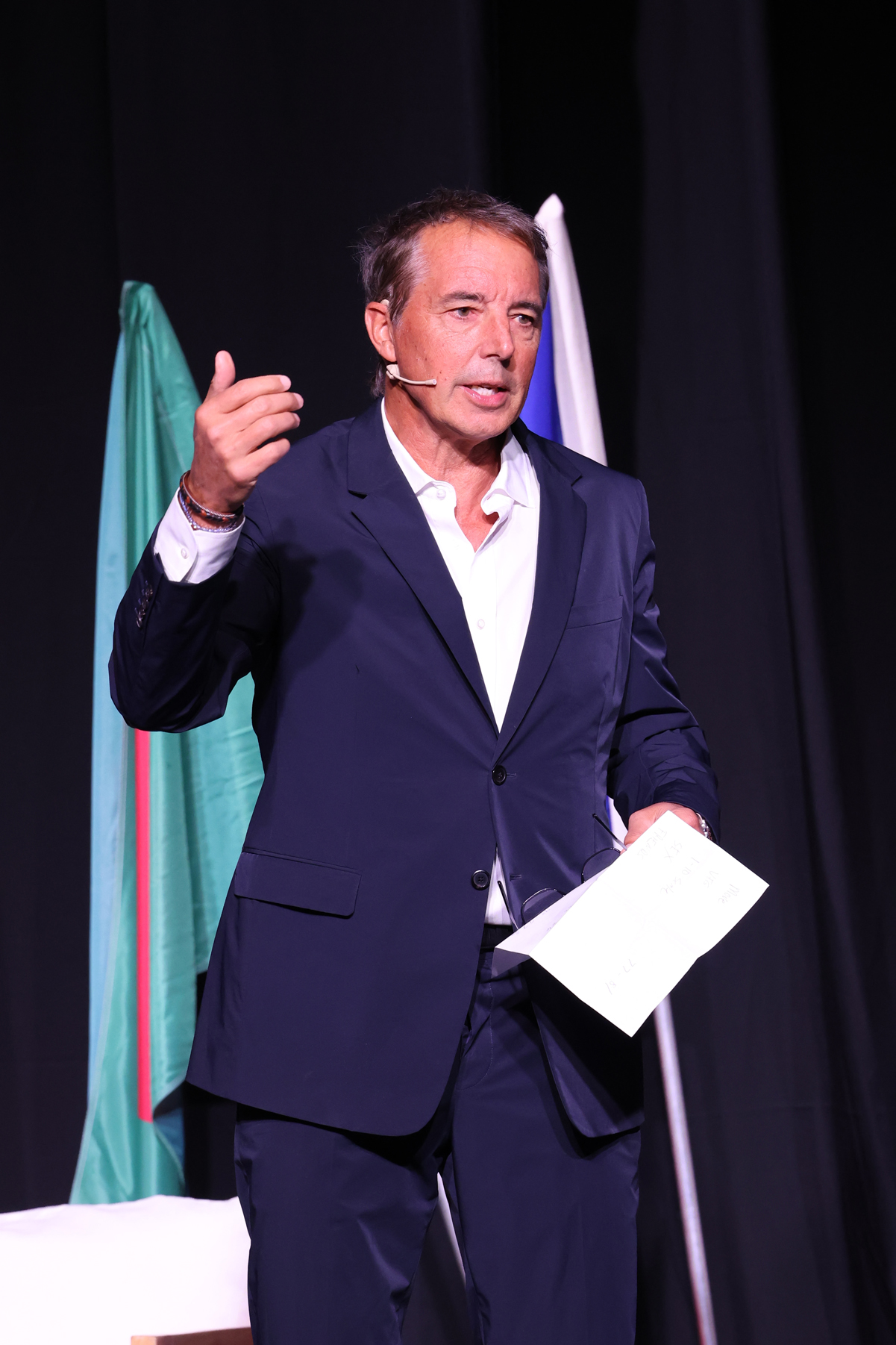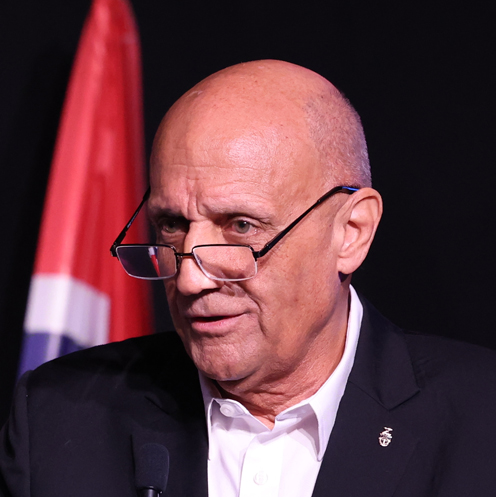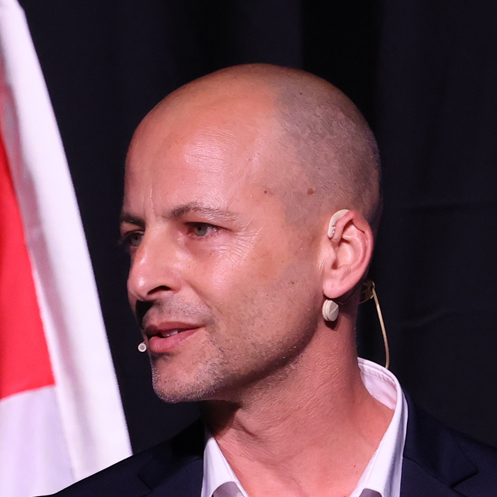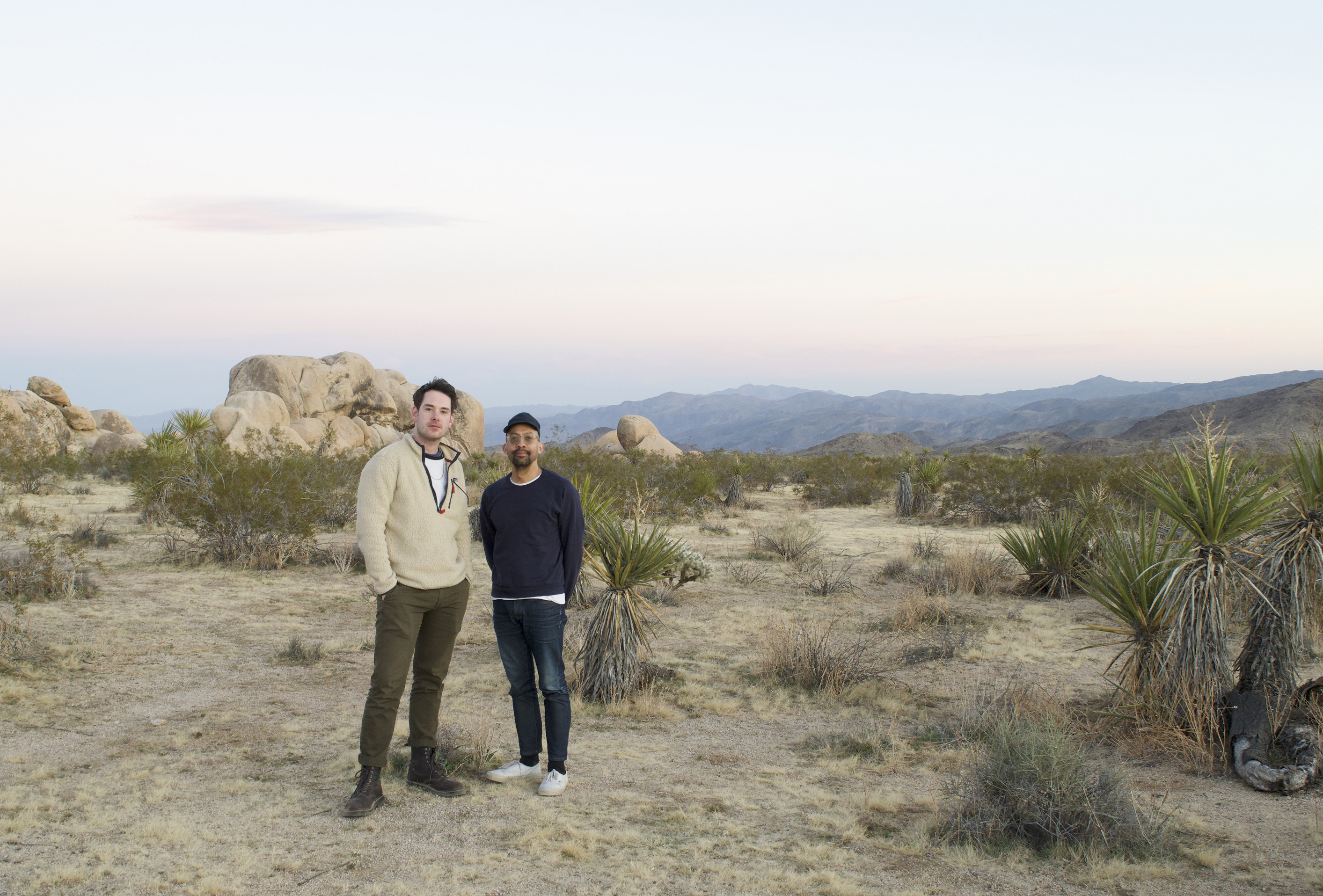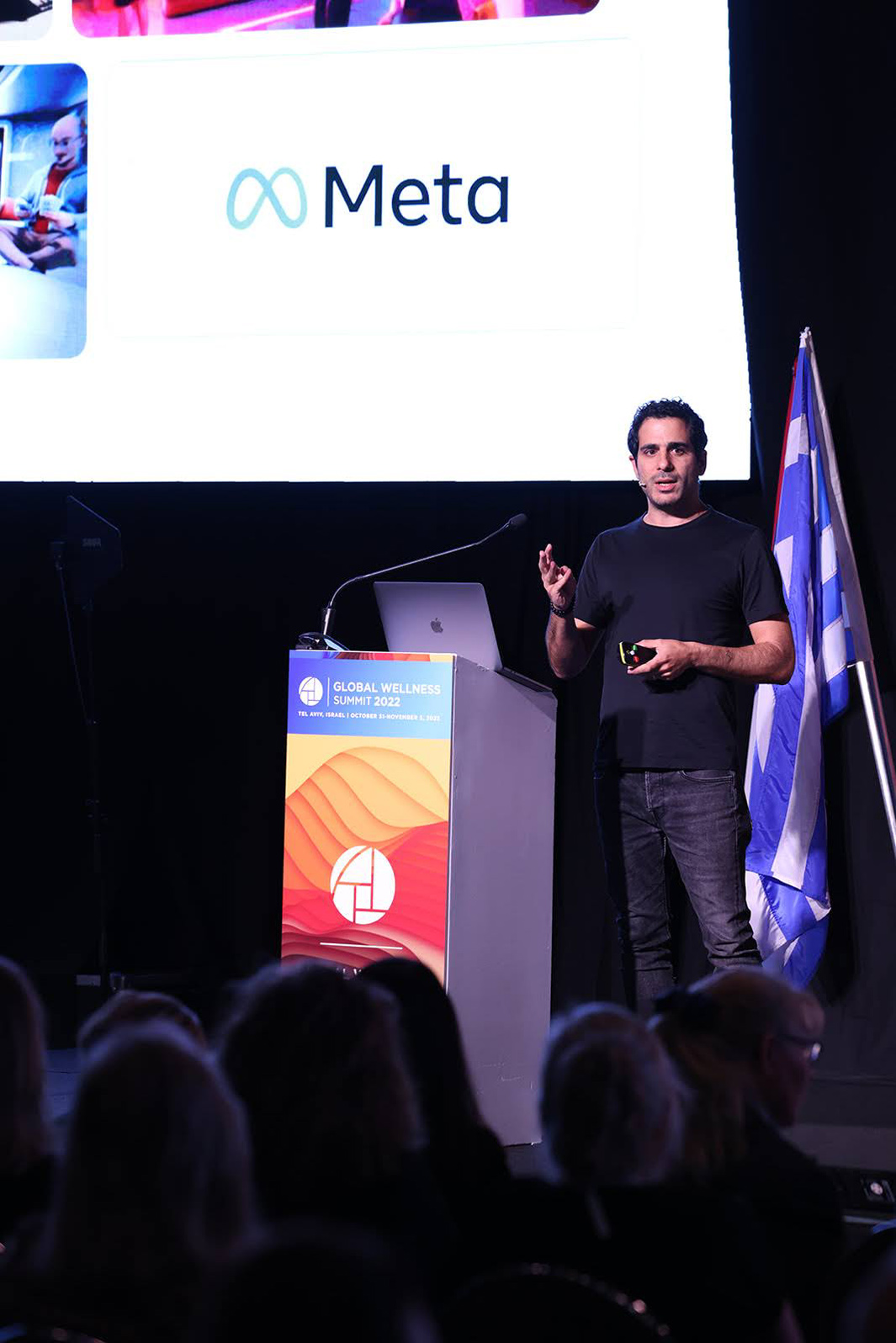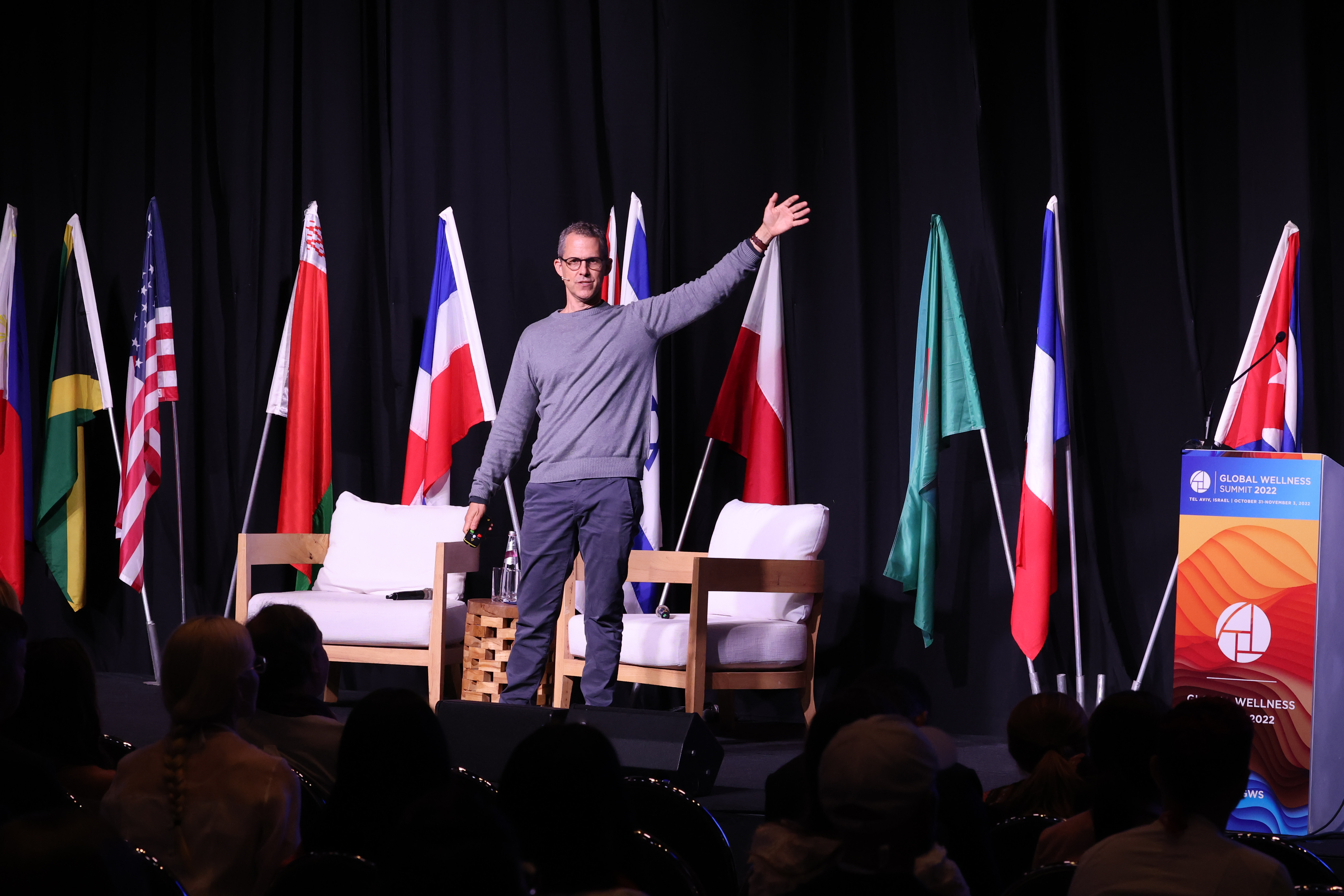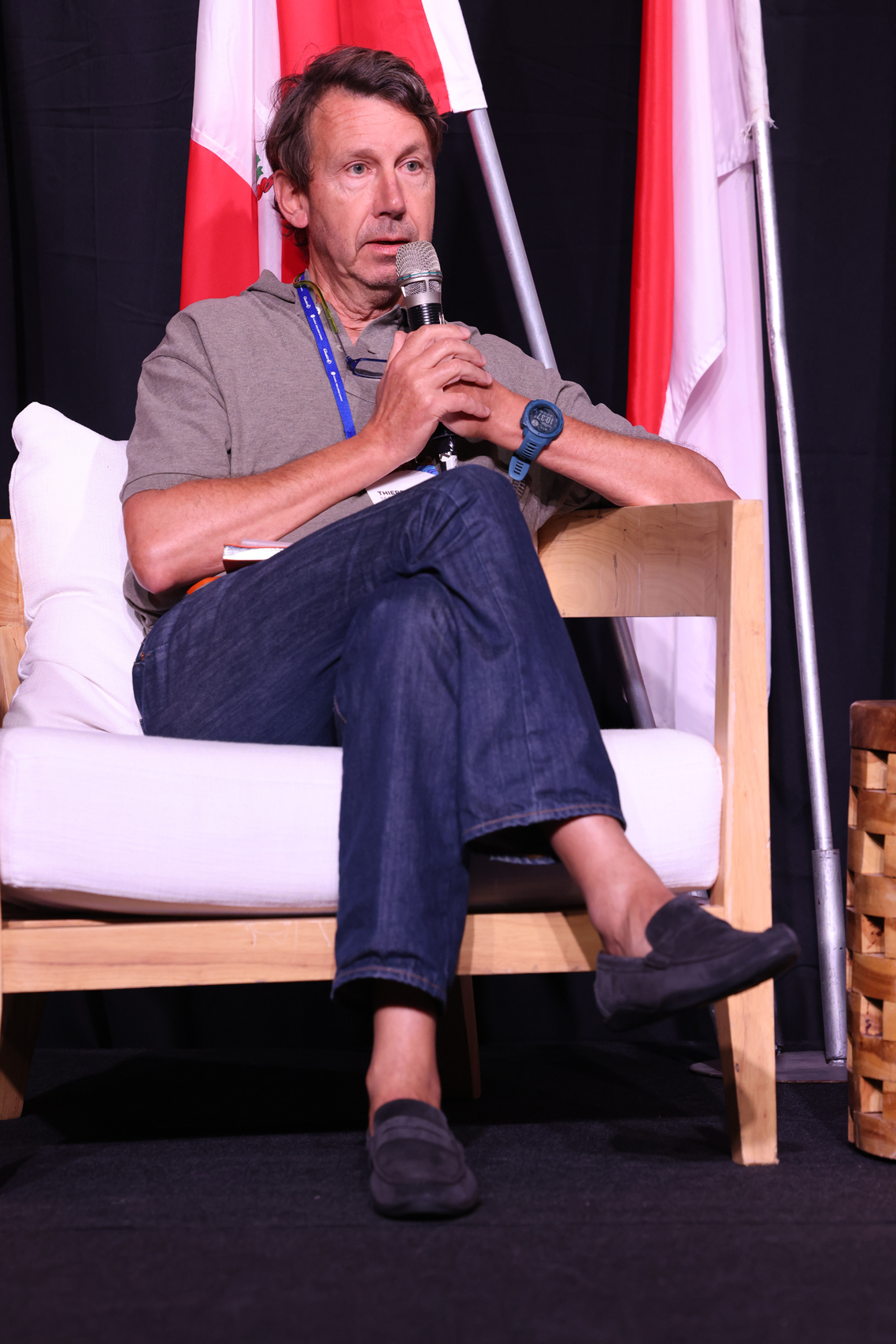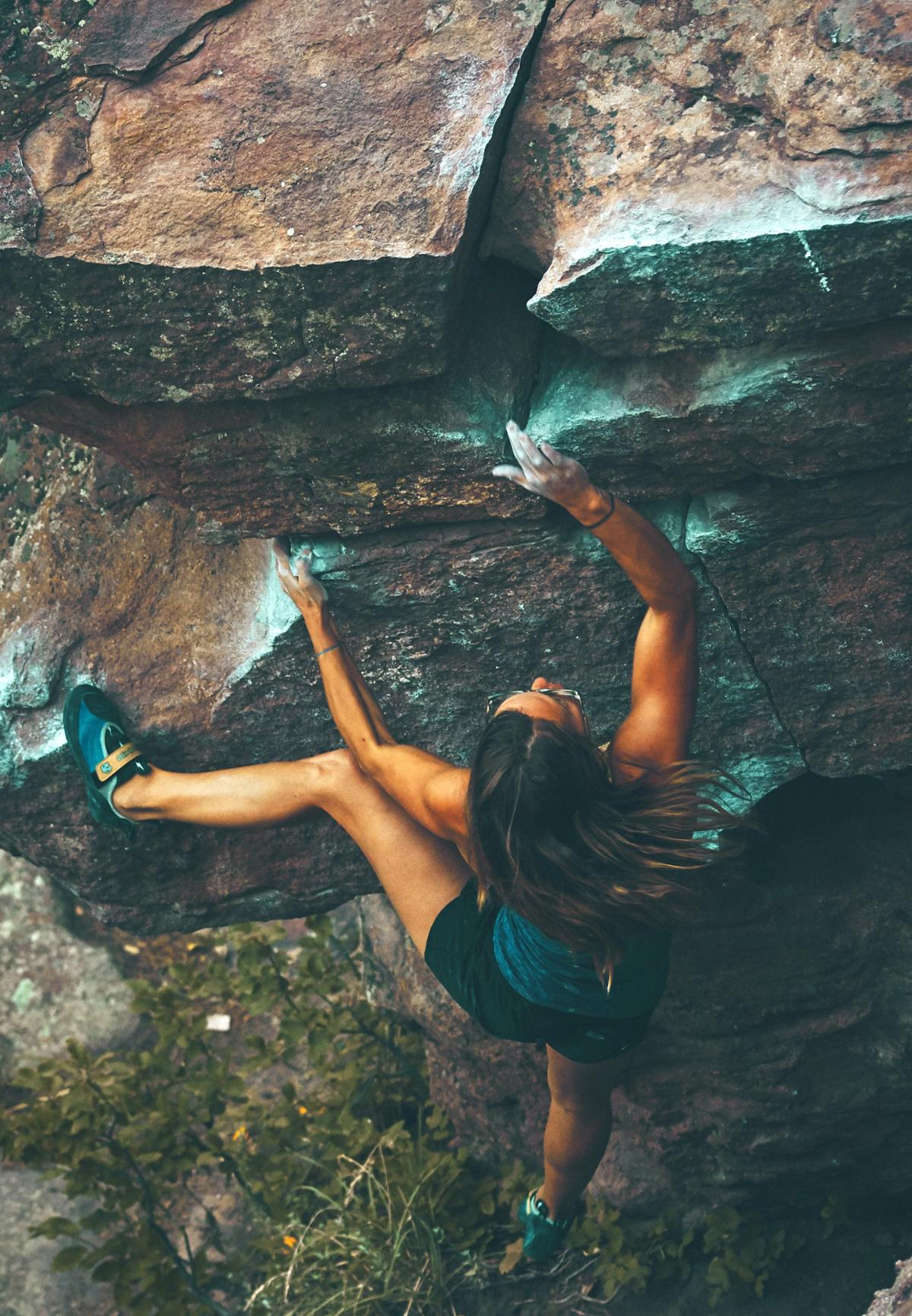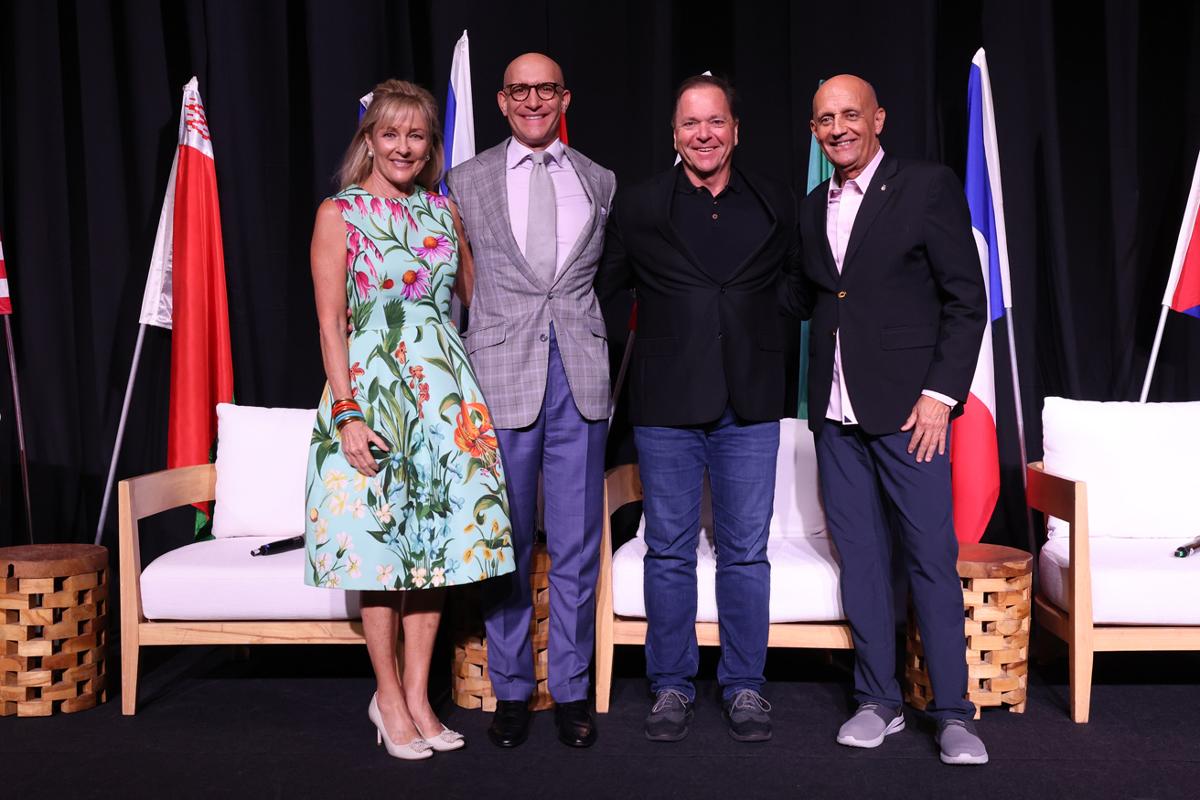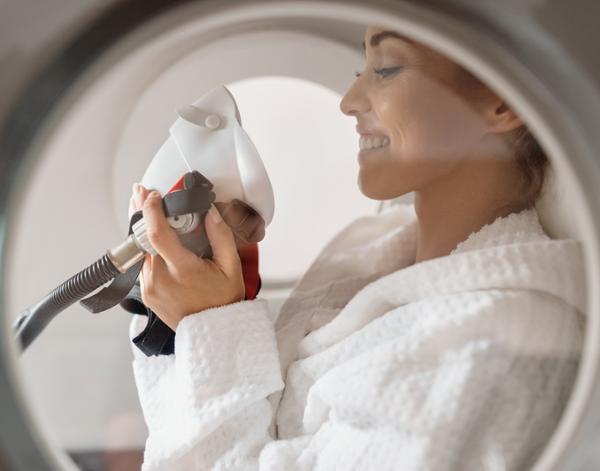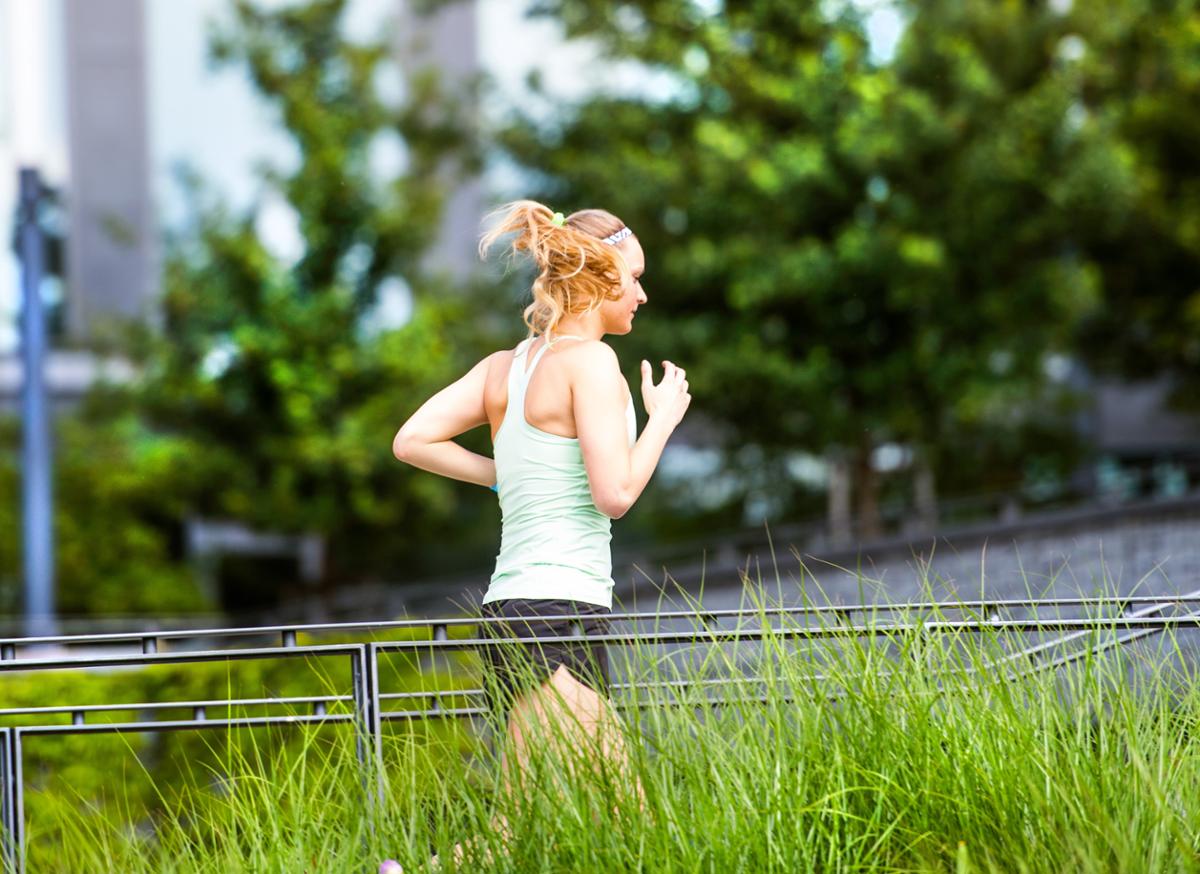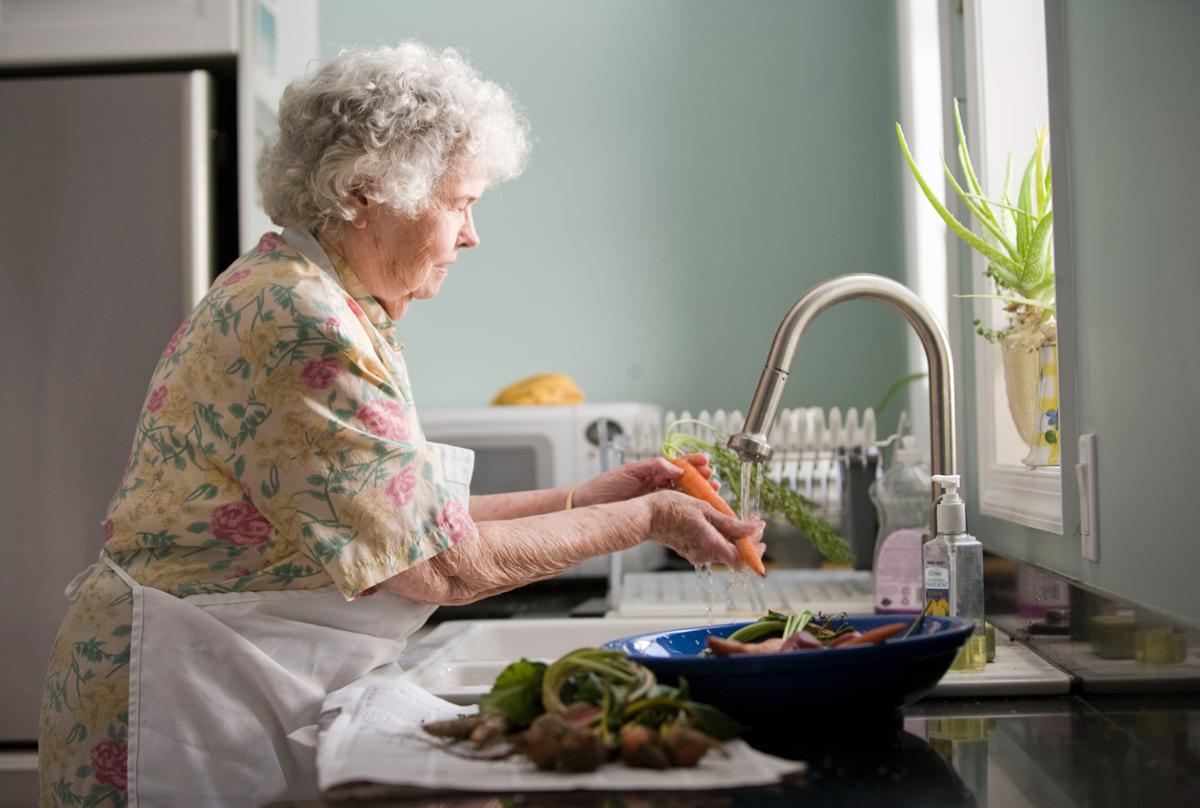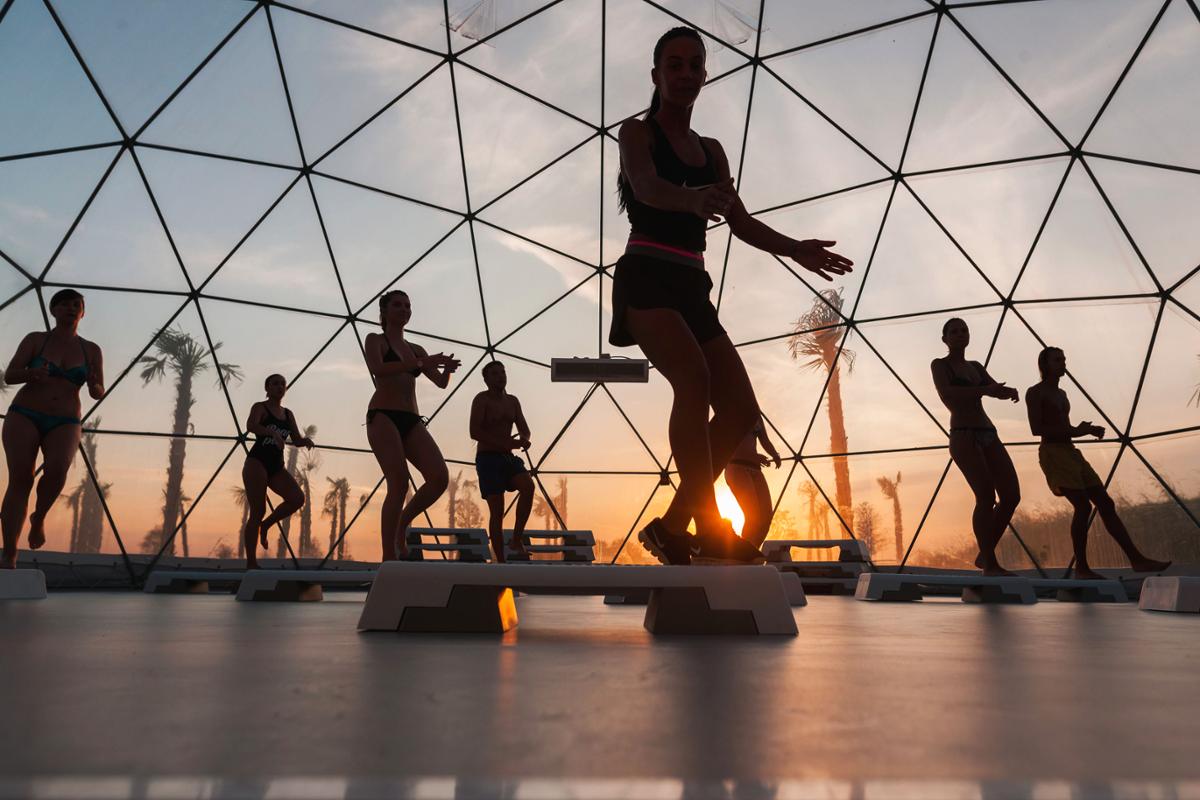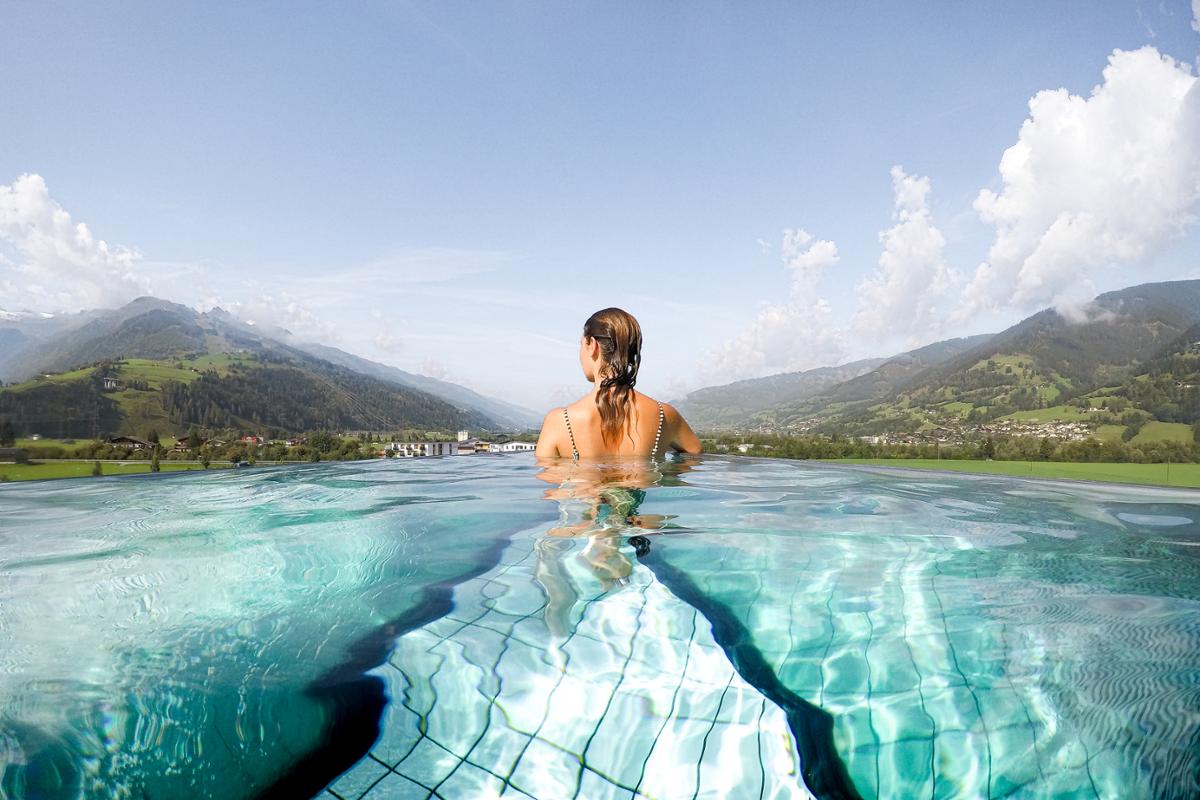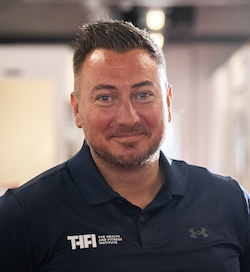The 16th annual Global Wellness Summit brought upwards of 400 delegates representing 50 countries to convene in Israel’s commercial capital, Tel Aviv, to discuss themes of technology and healthcare, longevity, inclusive wellness, faith’s role in wellbeing, nutrition, art and music and the natural world.
As has become tradition at GWS, filmmaker Louie Schwartzberg opened with a preview of his new film, Gratitude Revealed, which set the tone for the three days ahead, reminding delegates of the power of being grateful for both our physical and mental wellbeing.
GWS chair Susie Ellis also reminded delegates of all the things we have to be grateful for as an industry: the Global Wellness Institute is predicting that the wellness market has surpassed 2019, pre-pandemic levels – when it was valued at US$4.9tr – to more than US$5tr this year, and that it will grow at an impressive 10 per cent annual pace through to 2025. Wellness travel is set to grow 21 per cent a year from 2020 through 2025 – from a US$720bn market to over US$1tr in 2025.
“What’s happening in the industry is in a way, astonishing,” she said. “People are demanding that wellness be at the centre of almost everything they do. From where and how they live, to where and how they work, to how they travel and what they want to experience while travelling, to how they track their health, hack their biology and be the best they can be, physically and mentally. Whether this is a reaction to pandemic times, or simply a new consciousness about the importance of both healthcare and self-care, all of it adds up to increased opportunities for our industry.”
Co-hosts Amir Alroy, co-founder of Welltech Ventures in Israel, and Omer Isvan, president of Servotel in Turkey, delivered a packed three-day programme with the theme of ‘Open Minds. Open Hearts. Open for Business,” designed to recognise the importance of embracing an open attitude as the world reels from years of challenges. They brought some of the top minds from Israel and around the world in medicine and technology to speak to delegates, alongside familiar faces from the wellness industry.
Alroy explained that wellness innovation in Israel is on the rise, with more than 500 wellness startups and 2,000 health tech companies in the country. “The wellness arena in the Middle East is vast, both in needs and offerings,” he said. Isvan said that while hospitality has been important in integrating wellness into life, he thinks we’re graduating out of that space now. “We’re seeing a change, moving from the hands of the wellness industry provider into the hands of the individual,” he explained. “Knowledge and self-adoption of wellness regimes have integrated into daily life. We need to be so much more mindful of the sophistication of the individual.”
HEALTH, TECHNOLOGY AND LONGEVITY
Technology is one reason for the increasing sophistication of the individual when it comes to wellness and its ability to both inform and connect means people are increasingly taking greater control of their own wellness and discovering new ways to track and boost their health.
Michael Roizen, chief wellness officer for the Cleveland Clinic, reminded us that society has expanded life expectancy by about two and a half years every ten years since 1890. “We are entering a great age reboot,” he said, where you can control your genetic inheritance and how you function epigenetically by your actions, through exercise diet and technology such as Crispr, so that we can live not just longer, but better.”
Roizen, who was Summit chair in 2021, was joined on stage in Tel Aviv with Tzipora Strauss, head of neonatology at the Sheba Medical Center in Israel and head of the hospital’s upcoming Longevity Center. She spoke about technology’s role in longevity medicine, where AI is increasingly important, as well as the need to motivate people to maintain their performance as long as possible. “Babies that are born today will live at least 100 to 150 years,” she said. “We need to bring those babies not just lifespan, but healthspan.”
Shai Efrati, a professor at the Sackler School of Medicine & Sagol School of Neuroscience at Tel Aviv University and director of the Sago Center for Hyperbaric Medicine & Research at Shamir Medical Center in Israel, spoke about one way to do that: through the game-changing science of hyperbaric medicine. Efrati detailed how hyperbaric chambers, which have been successfully used for wound healing for decades, can help with brain health and function as well, effectively reversing ageing by improving cognitive function, memory, attention and executive function. “We are actually taking the biology back in time,” he said. “We can reverse many things in the past that we thought were not reversible. We can actually generate neurons. We can build brain tissue like we build muscle.”
It’s these kinds of medical advances that have the wellness industry inspired to take on bigger issues of health and longevity, such as the Wellness Moonshot for a world free of preventable disease (www.globalwellnessinstitute.org/wellness-moonshot).
Despite the multi-trillion-dollar wellness market, the World Health Organization reports that in 2022, 74 per cent of all deaths globally are the result of non-communicable diseases and obesity, diabetes and hypertension rates have more than doubled in the last two decades.
First launched at the 2017 Global Wellness Summit, the Wellness Moonshot is a mission to eradicate preventable, chronic diseases, and this year, it received a boost from a sponsorship by Fountain Life, a fast-growing company with a preventative healthcare model to identify and treat illnesses at their earliest stages (www.fountainlife.com).
Fountain Life’s co-founders, doctors Peter Diamandis and Bill Kapp, were on stage at the Summit to discuss the mission, while high-profile co-founder of Fountain Life and philanthropist Tony Robbins sent a pre-recorded video message to delegates.
Kapp said: “This is the seminal issue of our time. We want to help people become the CEO of their own health,” while Diamandis explained further: “Technologies are converging to give us insight into the molecular biology of ageing – we’re in the middle of this revolution,” he said. This includes senolytic medicine, stem cells, gene therapy and Crispr.
In a separate session, Dr Richard Carmona, chief of health innovation at Canyon Ranch and 17th Surgeon General of the US, discussed the epigenetics of wellness and asked delegates to think of genes as embedded software systems: “If you give them good input, these genes act in a positive way,” he explained. “Your whole life you get to re-code your genes by the actions you take.”
Naveen Jain, CEO of Viome, a company that offers gut microbiome testing, echoed that sentiment. “Your genes are not your destiny,” he said. “How you express your genes is your destiny.” A holistic view of wellness should include a focus on nutrition, stress reduction, exercise, sleep and mindset, he said. “The body is all connected, and that’s how you have to look at wellness,” he explained.
Dan Buettner, founder of Blue Zones, who spoke at the 2018 Summit in Italy, was back to talk about longevity and wellness and what he’s found based on the research into the healthiest communities around the world. With a new cookbook out, called Blue Zone Kitchen, Buettner focused his talk on the role nutrition plays in longevity and health – “The runway to health is through our mouth,” he said.
Each of the Blue Zones has different diets – sourdough bread in Sardinia, purple sweet potatoes in Okinawa – but they are all 90-100 per cent whole food and plant-based, with meat less than five times a month, and beans are the cornerstone of every Blue Zones diet in the world. Most Americans don’t eat anywhere near this, and Buettner said that the standard American diet will kill 680,000 Americans prematurely this year. “This is the Number 1 enemy to wellbeing worldwide,” he said. “Our environment has changed, and if we really want to promote wellness, we need to shift our focus to our homes, our neighbourhoods and our nations, so the healthy choice is not only the easy choice, but the unavoidable choice.”
INCLUSIVE AND EVERYDAY WELLNESS
The idea of making wellness easy and accessible was echoed throughout the Summit, and it’s no wonder; if there’s one thing that we’ve learned during the pandemic years, it’s how interconnected we all are when it comes to health and wellness, but how disproportionate our healthcare and access to wellness is.
Denise Bober, SVP of human resources for The Breakers, detailed the Florida resort’s recent partnership with Dr Nicola Finley to create a pilot programme on health equity for team members of colour, which has shown promising real results. “We wanted to make sure our team members feel seen, heard and cared for,” said Bober.
In a panel on wellness real estate, Amy McDonald, CEO of Under a Tree Health & Wellness Consulting, said that many of her projects are moving from spa and wellness to mixed-use and residential, with developers interested in bringing wellness into every aspect of the design. Ricky Burdett, director of LSE Cities and professor of urban studies at London School of Economics, outlined the development of the east London neighbourhood of Stratford, which has built wellbeing into the design, saying: “You can design cities to either make people healthy and well, or you can do the opposite.”
Even the GWI’s research this year focuses on wellness policy, in an effort to bring wellness to more people. “The wellness economy is going to leave behind people who don’t have the money to spend on it,” said Ophelia Yeung, GWI research fellow and co-author of the study. “We have reached a turning point and we need to act now.”
Katherine Johnston, co-author and senior research fellow with the GWI, explained how micro-level policies such as warning labels on food can nudge our behaviour towards wellness, meso-level infrastructure at the community level like schools, workplaces or parks can help even further, but that on the macro level, things such as poverty or the environment often feel out of our control and need help from government policies. “Wellness shouldn’t be a luxury,” said Johnston. And importantly, she said, “wellness policy is not the same as health policy; wellness policy needs to cut across all different government domains.” And wellness policy can have real results; Johnston estimates that for every dollar invested in health prevention and promotion, there is an ROI of US$4 to $14, and importantly, wellness spending is correlated with both happiness and life expectancy.
ART, MUSIC & COLOUR
Beauty and peace are very much a part of wellness. This year’s Summit reflected that through an exploration into the role that art, music and colour can play in our wellbeing.
Tai Danai, founder and CEO of Artlink, discussed his company’s culturally sensitive, narrative-based approach to providing art in the hospitality industry. “There are many ways to tell stories with art, to inspire, to uplift,” he said.
The BBC’s Simon Shelley, VP of Storyworks, returned to showcase several episodes of the series created in conjunction with the Global Wellness Institute, “In Pursuit of Wellness: The Art & Science of Living Well.”
This included a segment on music for neurodiversity and a look at young Kenyans who are finding appreciation for the benefits of Africa’s healing plants. “Wellness is ubiquitous, but it’s often misunderstood,” said Shelley. The series focused on “improving understanding, recognising the evidence, and encouraging a collective pursuit.”
Ari Peralta, neuroscientist and sensory designer for My Cocoon, led a fascinating breakout session on the power of colour to affect mood. “What we perceive is what we feel – sensation, perception and attention are all intricately linked,” he said. “Perception is key to wellbeing, and the senses can influence each other and shift perception, offering new opportunities to promote wellness outcomes.”
The way our brain processes music is equally complex, as illustrated by a live musical performance by music savant Derek Paravicini, who is both autistic and blind. Paravicini is able to play almost any piece of music in any key on the piano after hearing it just once, and wowed the audience with live, real-time requests.
Freddie Moross, managing director of Myndstream, a provider of music for health and wellbeing, brought Paravicini to the Summit to illustrate the incredible power of music for wellbeing. Moross was later awarded the Debra Simon Award for Leader in Furthering Mental Wellness for his work using music as a tool for healing and a bridge to help people feel included and respected, and particularly for his impact on neurodiverse communities.
Moross also brought the musical duo of Charlie Laubacher and Skooby Laposky, known as Palm Reading, who presented their unique musical talents. Palm Reading captures biodata from plants, which is then translated into notes that create musical compositions. Laubacher and Laposky found their inspiration through a quest to listen more closely to nature and have recorded plants everywhere from Malibu to California and the Joshua Tree National Park. But at the GWS, they unveiled a short video in which they had captured music from plants in both Israeli and Palestinian territories the week before the Summit, showing that nature knows no political boundaries.
NATURE & WELLNESS
The power of nature to heal has always been a strong theme in the spa and wellness industry, but never more so than in the years since COVID, when people have looked to the natural world as a way to recover from years of lockdown and uncertainty.
Global economist Thierry Malleret, co-founder and managing partner of the Monthly Barometer, asked us to start thinking about nature as a form of capital: “Half of the world’s GDP is dependent on nature,” he explained. “Nature is a perfect antidote to today’s ills.” Because of this, there’s been a recent “explosion of start-ups that provide nature-based solutions,” he said.
“You have to look at things from a holistic perspective and ensure that we don’t just achieve individual wellbeing, but the wellbeing of society and our planet. The wellness of our environment is absolutely critical to our personal wellbeing.”
SOCIAL WELLNESS
Robbie Hammond, who was responsible for bringing The High Line to New York City and who has recently taken on a job with Therme Group US as president and chief strategy officer, explored the idea of nature in cities and its ability to create community. Hammond came up with the concept of The High Line as a way to bring nature, art, entertainment, play, wellness and community together in a disused rail line, with events such as the Mile-Long Opera inspiring a new, younger generation to explore the arts and the outdoors at the same time. “The way people want to consume leisure or culture has changed,” said Hammond. “People want to do things together, and they want to have an experience.” It’s that sentiment that has brought Hammond to Therme Group, which provides an accessible thermal experience in cities through a volume business model – its Bucharest location can handle 10,000 people at a time, and Hammond reports that only 10 per cent of them are going alone.
Therme is expanding globally with two locations already announced for the UK and more on the way, in addition to upcoming developments in the US, South Korea and Canada.
The social component of thermal bathing was explored further in a panel featuring Tina Newman, director of sales and marketing for Castle Hot Springs in Arizona; Stellan Iacob, COO and senior VP of Therme Group, and Bharat Mitra, co-owner of Peninsula Hot Springs in Australia. “Where there is community, there is wellness,” said Iacob, whose Bucharest Therme welcomes 1.4 million visitors each year. Mitra agreed, and detailed the plans of additional hot springs resorts that he’s developing in Australia. “Our goal is to create immersive experiences for people to relax in nature, connect with themselves, each other, and the inner world of their being,” he said. “It’s about community – we’re trying to make it accessible to as many people as possible.”
But perhaps the most striking look at the natural world was a presentation from Oded Rahav of the Dead Sea Guardians, who reported that every day, we lose half a centimetre of water from the Dead Sea, in large part due to man-made activities. This has led to a series of sinkholes – now number more than 7,000 – and if left unchecked, the Dead Sea will vanish in our lifetime. Rahav has dedicated his life to saving it and remains optimistic this is possible.
LOOKING TO THE FUTURE
Noam Gabison, industry manager for digital health at Meta Israel (Facebook), had us looking at a very different kind of future – one that involves meeting up in the metaverse. While many in spa and wellness are still trying to wrap their heads around what the metaverse is, Gabison explained why it’s important for our industry: “Health and wellbeing is the third pillar gaining traction in the metaverse,” he explained. Part of this is because how we approach healthcare has changed, he said; we’ve moved from a personal model focused on a physical approach that includes diet, exercise and traditional medicine to a social model with a holistic focus including diet, exercise, traditional medicine, mental health, alternative medicine and more. And importantly, “metaverse experiences are social first,” he said.
Six Senses CEO Neil Jacobs once again took to the stage in conversation with Global Wellness Summit executive director Nancy Davis to talk about the future of hospitality, highlighting themes of community and connection, regenerative travel and transformative travel. “People have changed,” said Jacobs. “They want a takeaway from hotels and resorts – they want places with personalities and a very strong story – there needs to be more to their stay.”
LEADING WOMAN IN WELLNESS
Sue Harmsworth, founder of ESPA, spoke about what she thinks is important to our industry: teaching resilience, focusing on innovation, clearing up the confusion between spa and wellness, helping with anxiety, supporting the public health system, and giving more than lip service to sustainability.
Harmsworth, a 50-year veteran of the industry, was later given the 2022 Leading Woman in Wellness award. In accepting the award, she said: “This industry has been a lifetime’s work for me. It gives me so much spirit and energy. If I think back to the early days of my career and how life evolves, I can see it goes in cycles, and I believe the wellness industry is more important now than it ever has been…This tribe of people who are driving change across the wellness industry keeps developing and changing and becoming more effective and dynamic.”
The Global Wellness Summit 2023 will be held in Qatar, with dates TBC www.globalwellnesssummit.com








